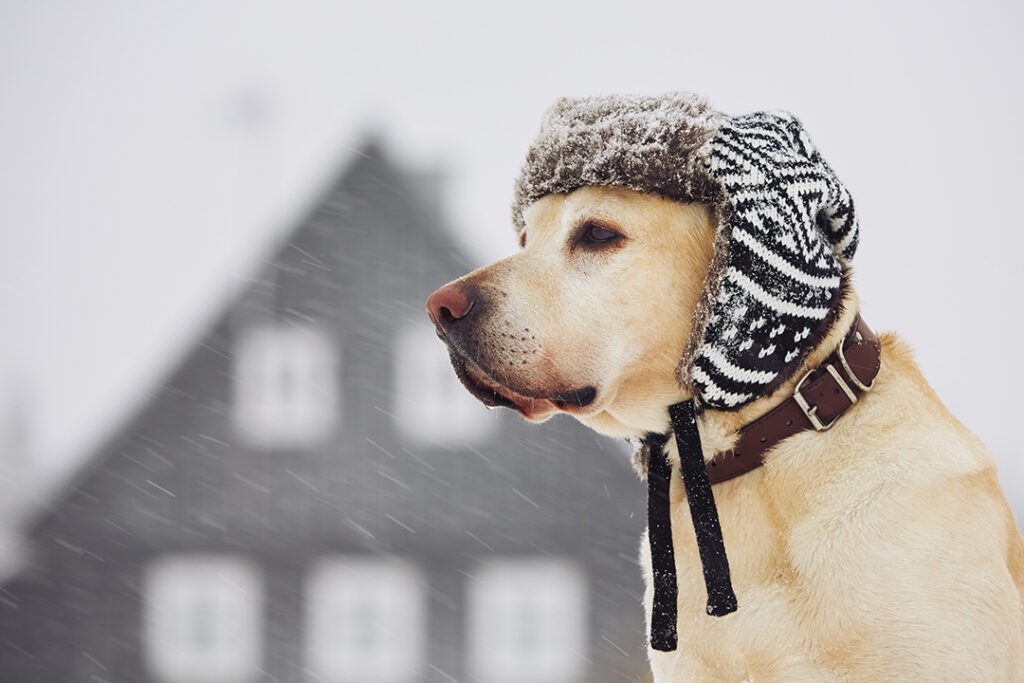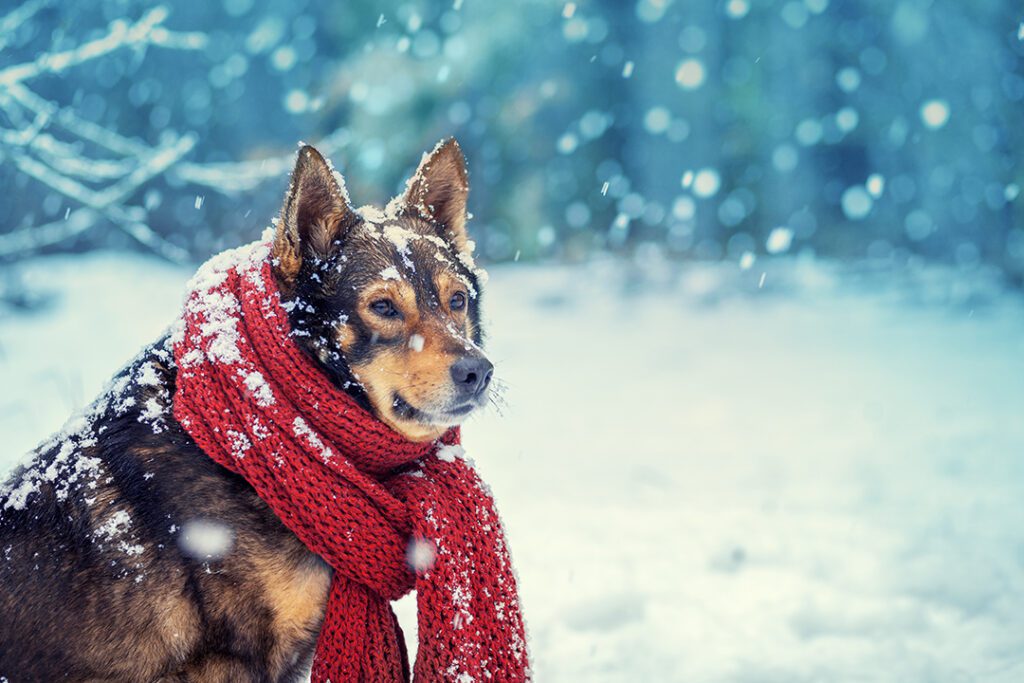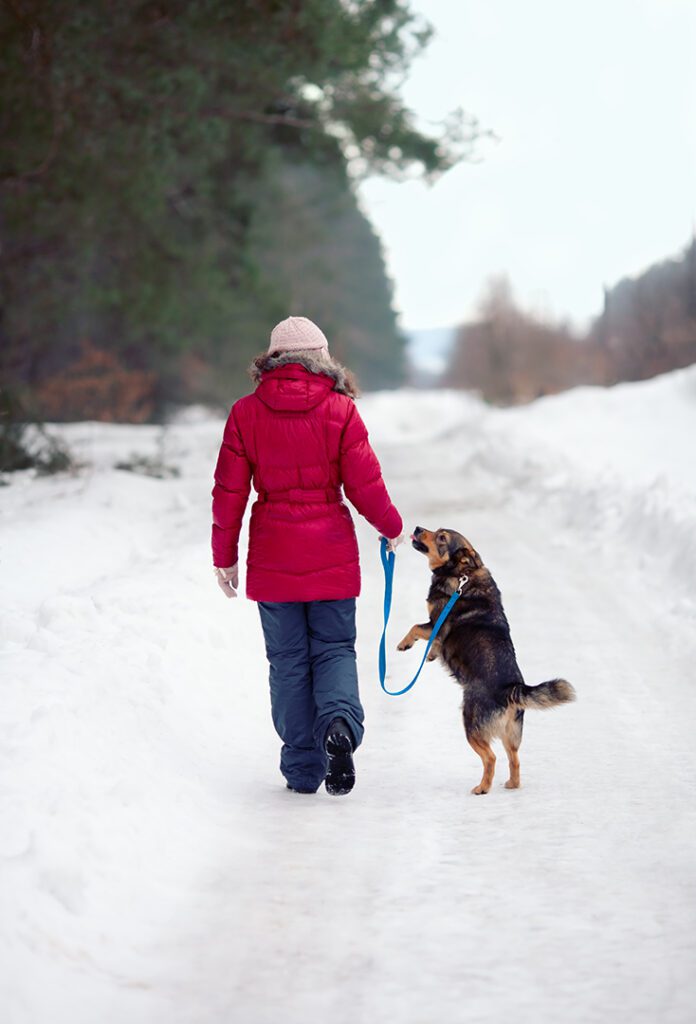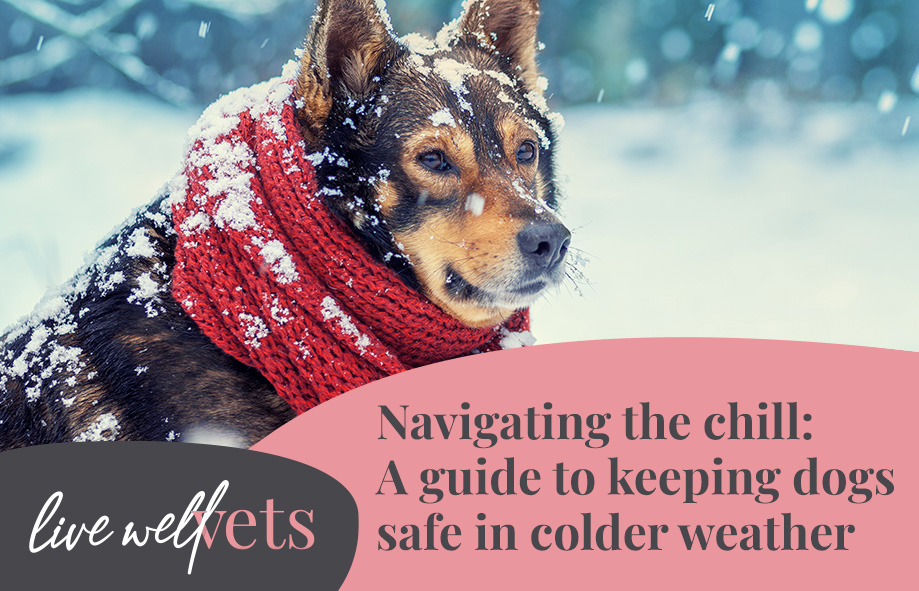As the temperatures drop and winter settles in, it’s important to think about the well-being of our four-legged friends. While some dogs revel in the crisp, cool air, others may need a bit more protection. In this guide, we’ll explore how to ensure your dog stays safe, warm, and happy during the colder months.

Outdoor exercise in colder weather:
Most dogs will still want to go for walks, and as long as you remain aware of the challenges this might bring, there’s no reason why they shouldn’t unless they’re very small or it’s extremely cold.
In harsh weather conditions, it’s advisable to limit your dog’s time outdoors. Ice, snow, and freezing temperatures can pose risks like frostbite or hypothermia. Shorter, more frequent walks might be preferable to extended periods in the cold. If you’re out and notice your dog lifting their paws up in a way that isn’t usual for them, crying out or stopping then they might have freezing paws and it’s time to call it a day.
Frozen areas of water should be avoided where possible. It’s hard to tell how thick the ice is over larger bodies of water such as ponds and rivers, and even puddles can be hazardous as they’re slippery and the edge of ice is sharp!

There are a few chemical hazards to look out for too:
De-icer used on car windscreens is very toxic. If you see puddles of this then do avoid it, and if you think your dog might have come in to contact with some, then seek our advice as soon as possible.
Roads are often treated with salt during icy periods, and this can irritate paws and digestive problems if ingested. Whilst dogs are unlikely to eat it thinking it’s a delicious treat, they might swallow enough whilst grooming themselves after a walk to cause them problems. It’s a good idea to keep fur on paws short and to rinse off feet and any low-hanging furry bits when you get home.

Know Your Dog's Tolerance:
Dogs, like people, have varying tolerance levels for cold weather. Larger breeds and those with thicker coats, such as Labradors and Huskies, may handle colder temperatures better than those with shorter coats.
It’s crucial to observe your dog’s behaviour to gauge their comfort level.

Protective Outerwear:
For dogs with shorter fur or those less accustomed to cold weather, consider investing in a cosy dog jacket or sweater. These can provide an extra layer of insulation, keeping your dog warm during walks or outdoor playtime.
While the colder months can bring a festive feel and look pretty, it’s crucial to prioritise the safety and well-being of our pets. By understanding their individual needs, investing in protective gear, and being mindful of potential hazards, you can ensure that your dog enjoys a happy and healthy winter.
So, bundle up, grab your pup’s favourite outfit, and embark on winter adventures together whilst keeping the chill at bay!



